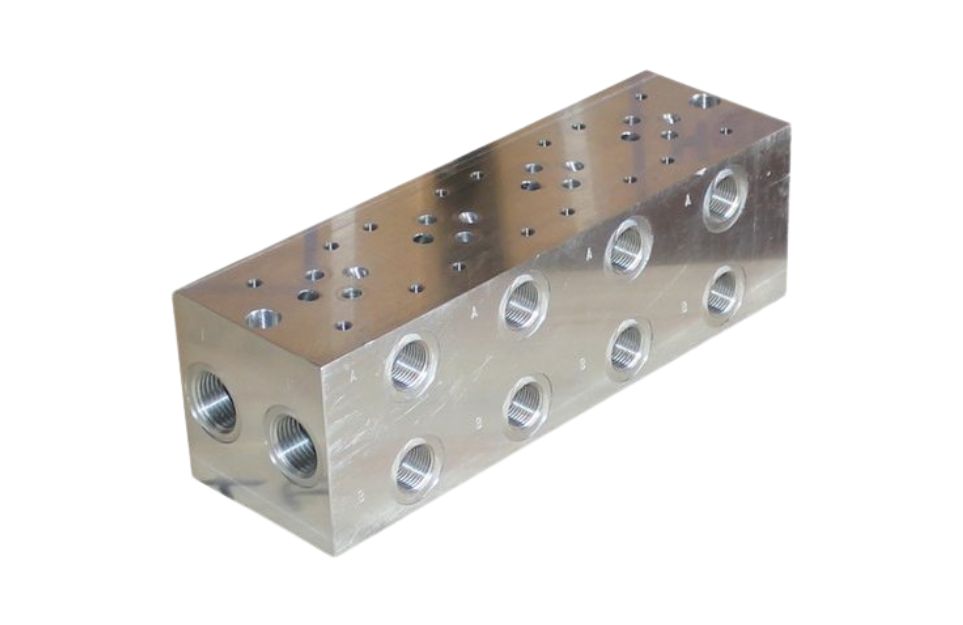Hydraulic Manifold Block
A manifold block, also known simply as a manifold, is a crucial component in hydraulic systems. It serves as a central hub for distributing hydraulic fluid or controlling the flow of fluid between various components in the system. The manifold block is typically made of metal and contains channels, passages, and ports that allow hydraulic fluid to pass through.

Common Types of manifold blocks in hydraulic systems:
Distribution Hub:
The manifold block acts as a distribution hub, facilitating the flow of hydraulic fluid between different components such as valves, cylinders, and actuators.
Ports and Passages:
Manifold blocks have ports that connect to other hydraulic components. Passages within the block allow the fluid to flow from one port to another.
Customization:
Manifold blocks can be customized based on the specific requirements of a hydraulic system. The number and arrangement of ports, as well as the design of passages, can be tailored to meet the needs of the application.
Reduced Leak Points:
By consolidating multiple connections into a single manifold block, the number of potential leak points in a hydraulic system is reduced. This can contribute to improved reliability and easier maintenance.
Mounting Surface:
Manifold blocks often have a flat surface with drilled and tapped holes, providing a convenient mounting surface for valves and other hydraulic components.
Materials:
Manifold blocks are commonly made from materials such as aluminum or steel, chosen for their strength, durability, and resistance to hydraulic fluid.
Flow Control:
Manifolds can include features for controlling the flow of hydraulic fluid, such as valves and orifices. This allows for precise regulation of fluid movement within the system.
Application in Mobile and Industrial Systems:
Manifold blocks are used in a variety of hydraulic systems, including both mobile equipment (such as construction machinery and agricultural vehicles) and industrial applications (such as manufacturing machinery).
Integrated Sensors:
In some advanced applications, manifold blocks may have integrated sensors to monitor pressure, temperature, or flow, providing valuable feedback for system control and diagnostics.
Hydraulic Power Pack Integration:
In hydraulic power packs, manifold blocks play a crucial role in directing hydraulic fluid to different functions and components, ensuring efficient operation.
Why Choose Hydraulic Manifold Block?
When designing or maintaining a hydraulic system, choosing the right manifold block is essential for achieving optimal performance. The manifold block's design should align with the specific requirements of the system, taking into account factors such as flow rates, pressure levels, and the number of connected components. It's common for manufacturers to provide customized manifold solutions based on the unique specifications of the hydraulic application.
